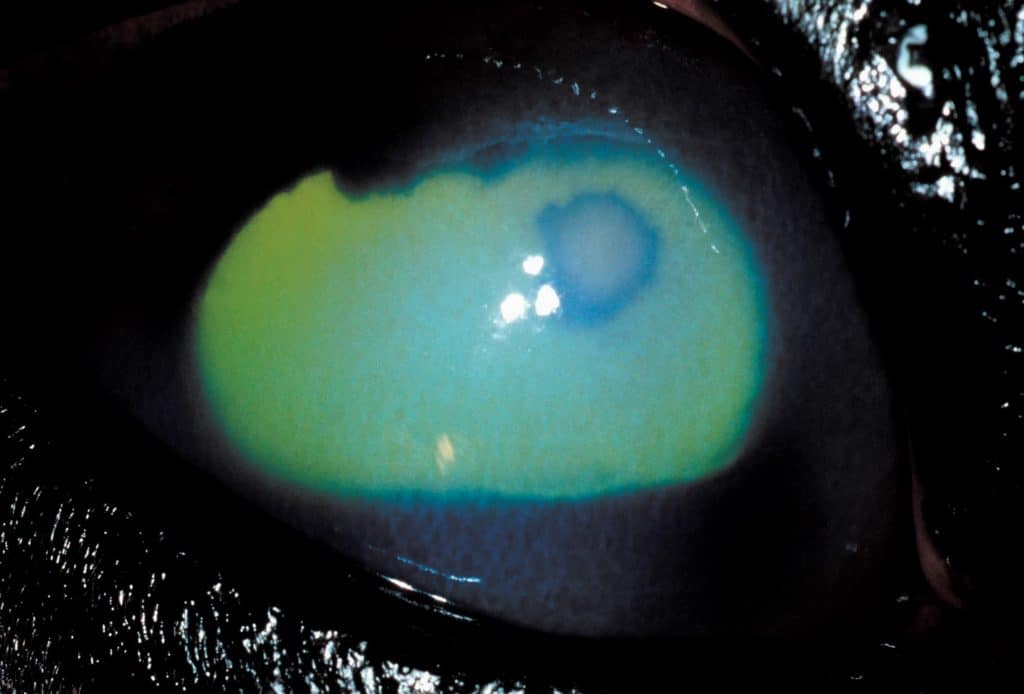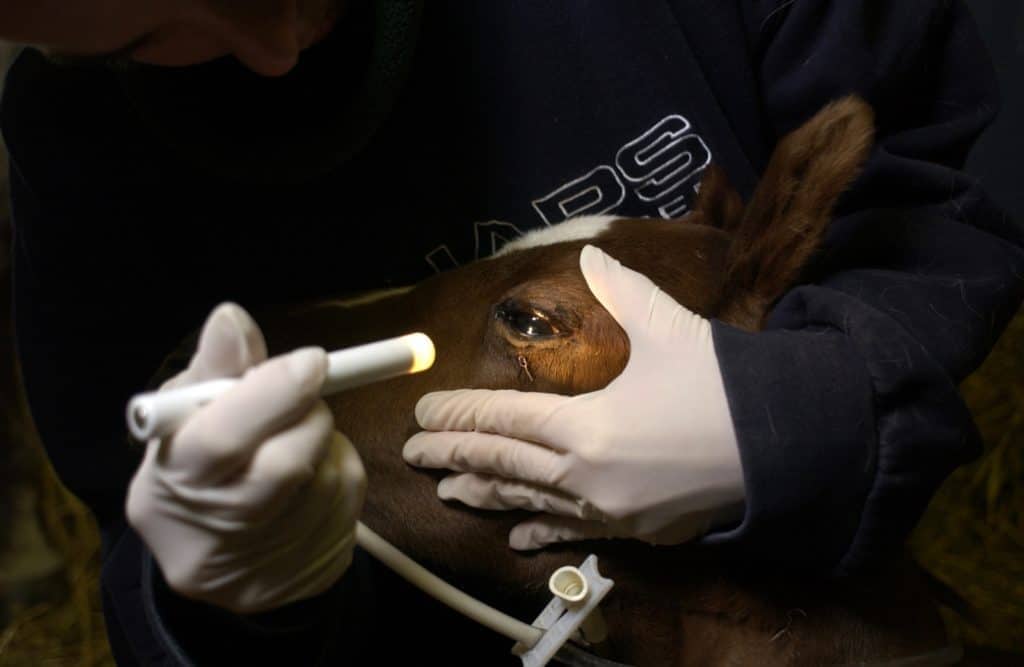
Equine Eye Anatomy and Physiology
Learn the basics of equine eye anatomy and physiology with glossary terms.

Learn the basics of equine eye anatomy and physiology with glossary terms.

Learn more about 10 conditions that can affect the horse’s retina and optic nerve.

This blinding disease is caused by increased eye pressure.

ERU is one of the most frequent causes of equine blindness. Here’s what you need to know.

A cataract can partially or fully obscure your horse’s vision, but surgical treatment can be successful.

The corneal stromal abscess is a very serious and potentially vision-threatening condition in horses. Here’s what you need to know.

Corneal diseases can range from minor annoyances to serious problems resulting in blindness in horses.

Fungi live all around us, and they are capable of producing severe eye infections. Here’s what you need to know.

Quick attention to these infectious eye ulcers can save your horse’s sight.

Even small injuries to the horse’s eyelids are important and require veterinary attention. Here’s what to watch for.

Learn about some of the most common eye problems found in foals and how they can be treated.

Your veterinarian has an array of instruments and techniques for examining your horse’s eyes.
Stay on top of the most recent Horse Health news with
"*" indicates required fields